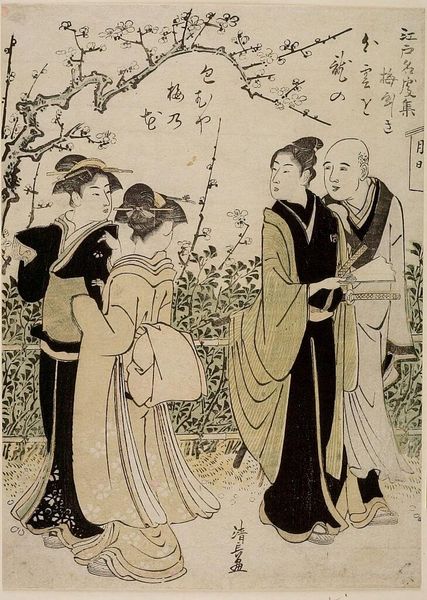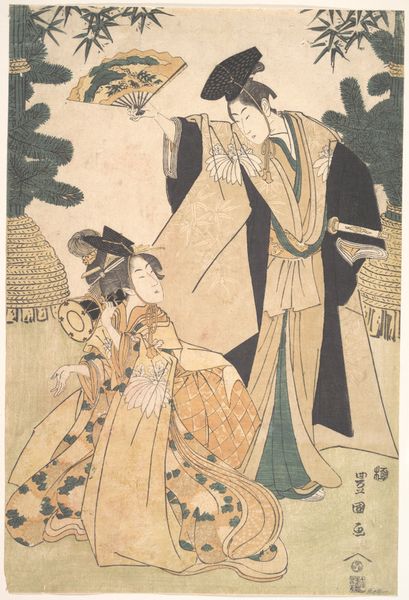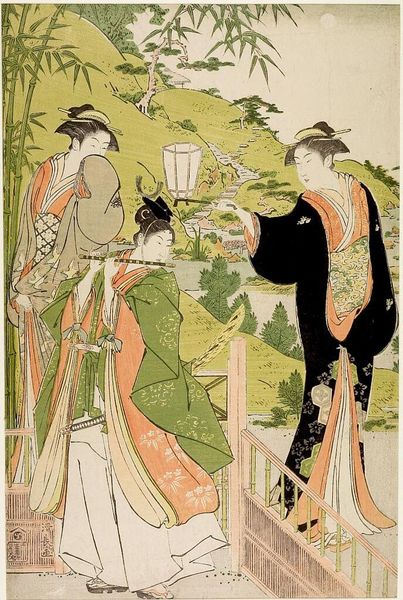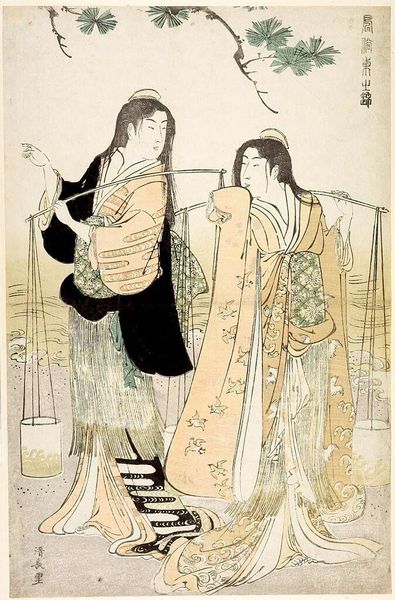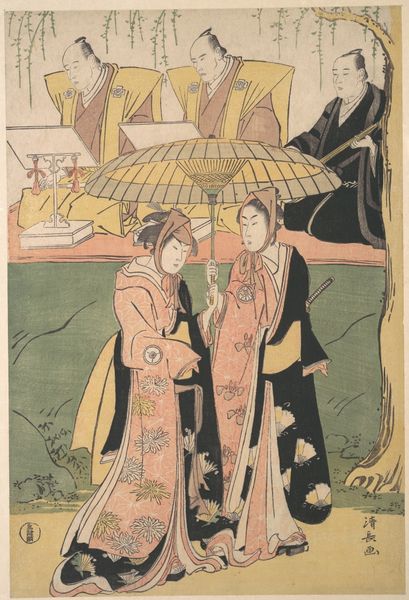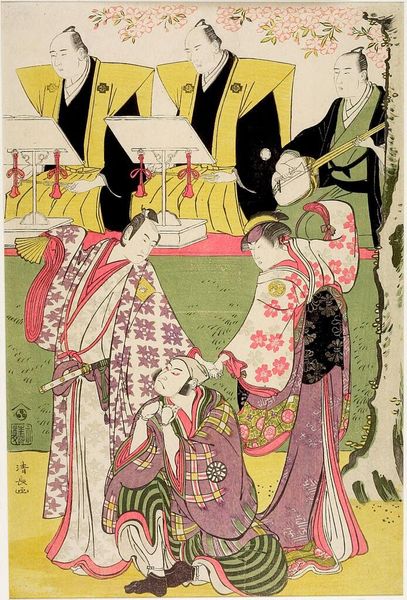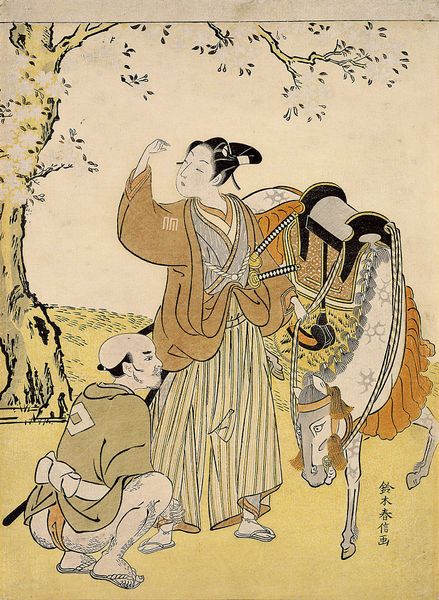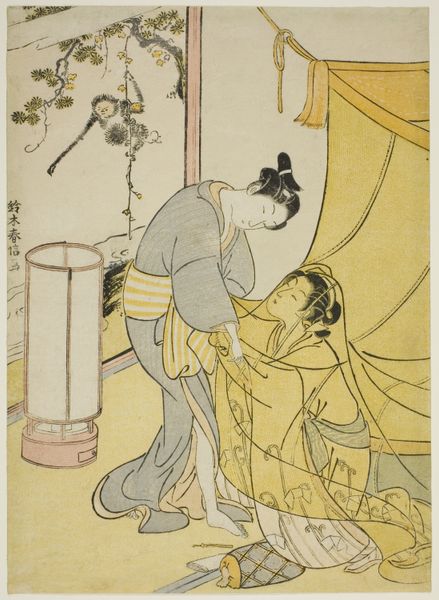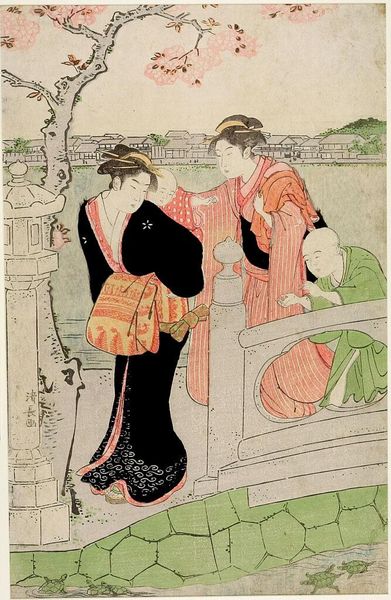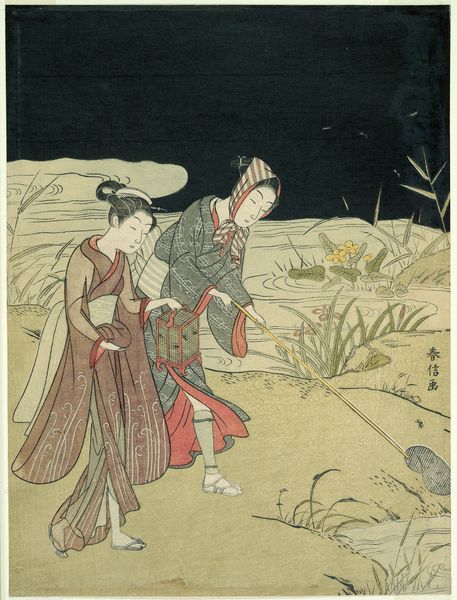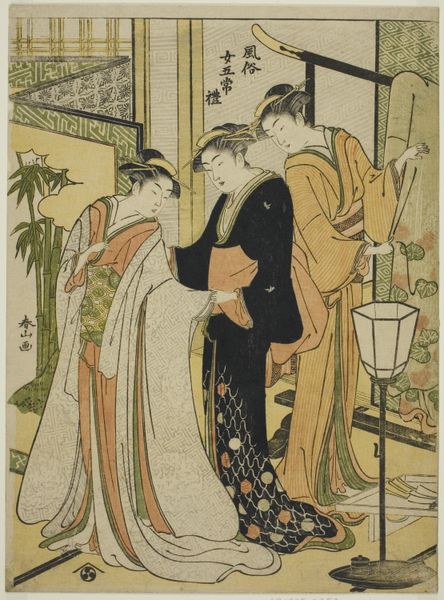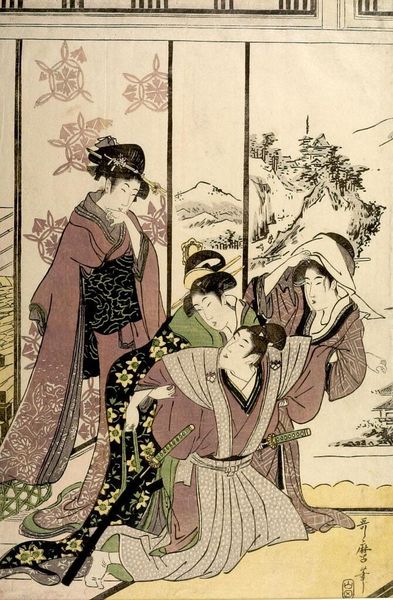
Scene from the jÅruri Ukina no Hatsugasumi (Kiriza, Spring 1788) showing Actors Iwai HanshirÅ 4th as Hisamatsu and Segawa KikunojÅ 3rd as Osome with Three Musicians (Takatsu edition) c. 1788
0:00
0:00
Dimensions: Paper: H. 37.8 cm x W. 25.4 cm (14 7/8 x 10 in.)
Copyright: CC0 1.0
Editor: This woodblock print, "Scene from the jÅruri Ukina no Hatsugasumi," by Torii Kiyonaga, dating back to 1788, depicts actors in a play. The composition feels quite staged, almost dreamlike. How do you interpret this work, especially considering its theatrical context? Curator: Theatrical prints like these offer a glimpse into the social dynamics of the Edo period. The actors, often idolized, blurred gender lines, challenging societal norms. Do you notice how the performance becomes a space for exploring fluid identities? Editor: That's fascinating! I hadn't considered the gender fluidity aspect. It's like the stage offered a space for challenging conventions that everyday life didn't. Curator: Exactly. Kiyonaga’s work captures this tension beautifully. The print isn't just documenting a play; it's reflecting a moment of social negotiation, where identities are performed and questioned. It makes you wonder about the real-world impact of these representations. Editor: I'm definitely going to look at Ukiyo-e prints in a new light now, thinking about their role in shaping cultural conversations. Curator: It's a great start to understanding the complex relationship between art, performance, and social change.
Comments
No comments
Be the first to comment and join the conversation on the ultimate creative platform.
